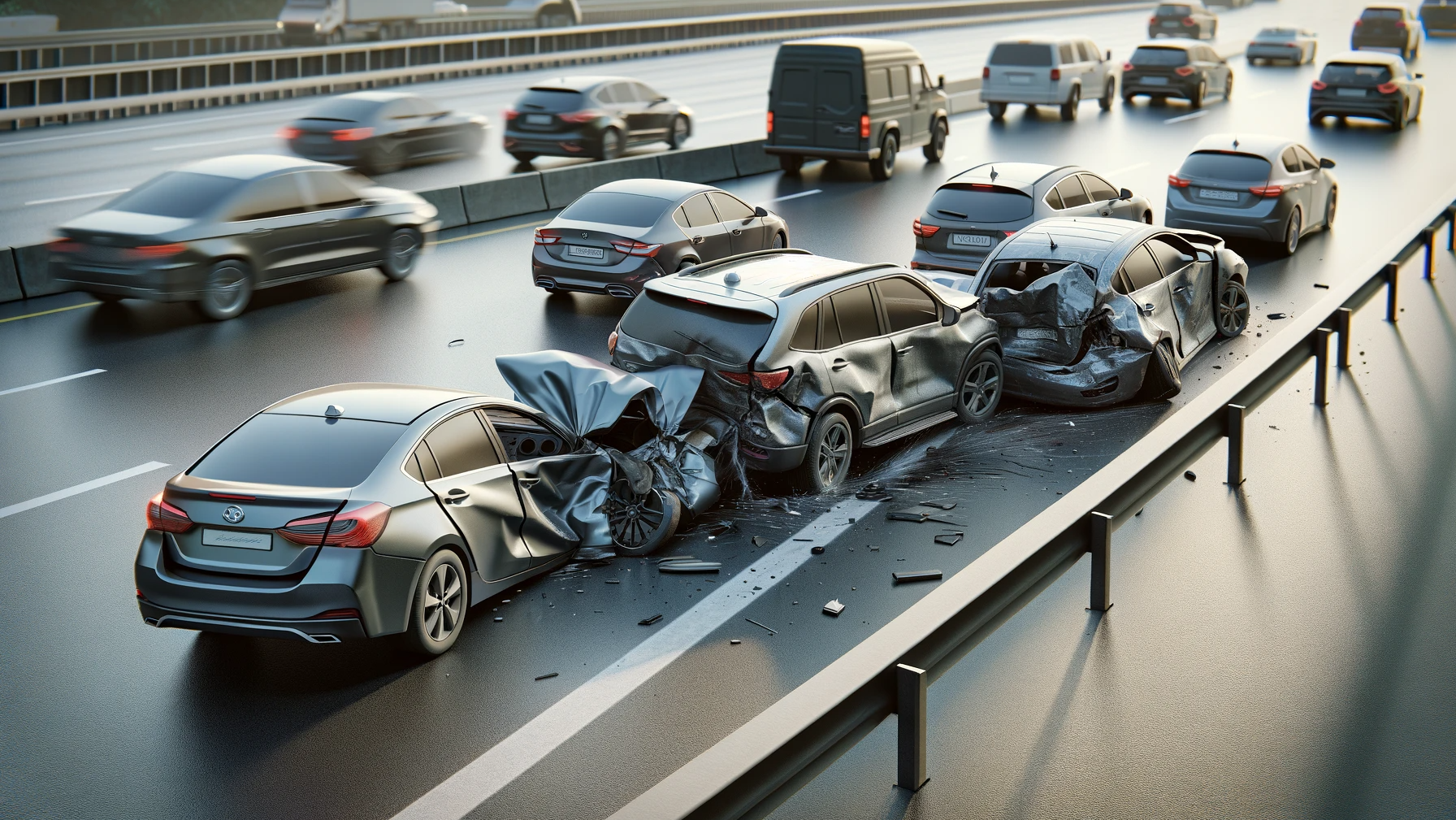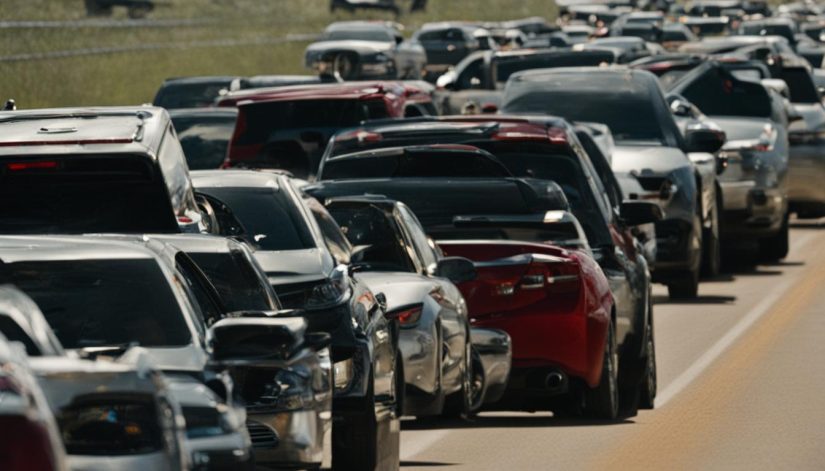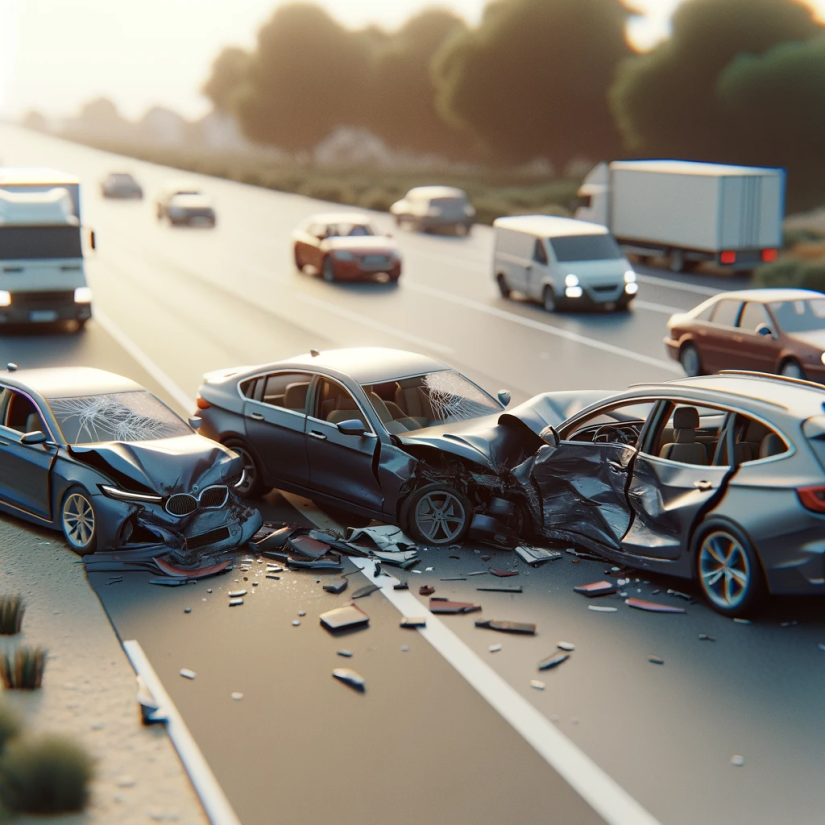Chain Collisions in Texas: Legal Guide to Determining Fault
January 13, 2024

Chain collision accidents in Texas can be complex and often involve multiple vehicles. Determining fault in these accidents is crucial for obtaining compensation, especially for innocent bystanders who may be injured in secondary collisions. As Texas follows a fault-based auto insurance system, it is essential to understand the legal process and how fault is determined.
When a chain collision occurs, it can be challenging to determine fault as it involves assessing the actions of multiple drivers. Gathering evidence, such as law enforcement reports, photographs, and accident reconstruction, is necessary to understand each party’s role in the chain collision.
Key Takeaways
- Chain collision accidents in Texas often involve multiple vehicles and can lead to complex legal issues.
- Texas follows a fault-based auto insurance system, meaning the driver responsible for causing the chain collision is responsible for providing compensation.
- Determining fault in a chain reaction crash requires gathering evidence such as law enforcement reports, photographs, and accident reconstruction.
- Negligence plays a significant role in determining fault in chain reaction crashes.
- Texas applies the principle of comparative negligence, which means even if an injured party is partially at fault, they can still seek compensation if their degree of fault is less than 51%.
Factors in Determining Fault in Chain Reaction Crashes
When determining fault in a chain reaction crash, several factors come into play. Negligence plays a significant role, and drivers who followed too closely, failed to leave sufficient space, or did not take appropriate steps after a collision may be considered at fault. It is essential to understand the actions of each driver involved and how their negligence contributed to the injuries. Gathering evidence, such as police reports, eyewitness testimonies, and physical evidence like skid marks and debris, can help establish fault. Accident reconstructionists are experts who analyze the available evidence to determine how the chain reaction occurred and assign fault to each involved party.
Texas Laws on Chain Reaction Car Accidents

When it comes to chain reaction car accidents in Texas, understanding the state’s laws is crucial for determining fault and seeking compensation. Texas follows a fault-based auto insurance system, which means the driver responsible for causing the chain reaction and resulting injuries is responsible for providing compensation.
However, Texas also applies the principle of comparative negligence. This means that even if an injured party is partially at fault for the chain reaction crash, they can still seek compensation if their degree of fault is less than 51%. Comparative negligence allows for a fair distribution of liability based on each party’s level of responsibility.
So how do Texas laws determine fault in chain reaction accidents? Determining fault requires a thorough investigation, including analyzing police reports, eyewitness testimonies, and physical evidence. The order of impacts and the actions of each driver leading to the chain reaction are crucial in assigning fault.
Example: Chain Reaction Accident Fault Determination
To better understand how fault is determined in chain reaction accidents, consider the following example:
| Driver | Actions | Fault |
|---|---|---|
| Driver A | Stopped abruptly without warning | 30% |
| Driver B | Failed to maintain a safe following distance | 50% |
| Driver C | Speeding and unable to stop in time | 20% |
In this example, the chain reaction occurred because Driver A stopped suddenly, Driver B failed to maintain a safe following distance, and Driver C was speeding and unable to stop in time. Based on the investigation, the fault is determined as follows:
- Driver A – 30% at fault
- Driver B – 50% at fault
- Driver C – 20% at fault
Understanding Texas laws on chain reaction car accidents and fault determination is essential for both drivers and injured parties seeking compensation. Consulting with a car accident attorney can provide further guidance and help navigate the legal complexities to ensure fair and just outcomes.
Common Causes of Chain Reaction Accidents in Texas

In Texas, several common causes contribute to chain reaction accidents, often resulting in serious injuries and property damage. Understanding these common causes can help drivers become more aware and take precautions to prevent such accidents.
Negligent Driving
Negligent driving behaviors are a leading cause of chain reaction accidents in Texas. These behaviors include:
- Distracted driving: Engaging in activities that divert attention from the road, such as texting, talking on the phone, or using a navigation system.
- Drunk driving: Operating a vehicle under the influence of alcohol or drugs, impairing the driver’s judgment, reaction time, and coordination.
- Speeding: Driving over the designated speed limit or too fast for current road and weather conditions, reducing the driver’s ability to react to sudden changes.
- Drowsy driving: Operating a vehicle while fatigued or falling asleep behind the wheel, causing lapses in attention and slower reaction times.
Failure to Follow Traffic Rules
Chain reaction accidents often occur when drivers fail to follow traffic rules, leading to dangerous situations on the road. Some common examples include:
- Failure to yield the right of way: Ignoring traffic signs or signals and failing to yield to other vehicles when required.
- Driving too closely: Tailgating or not maintaining a safe distance from the vehicle ahead, which limits the driver’s ability to stop or maneuver quickly.
- Ignoring traffic signs and signals: Running red lights, stop signs, or disregarding other traffic control devices, creating hazardous conditions for other drivers.
By understanding and avoiding these common causes, drivers can help reduce the likelihood of chain reaction accidents and promote safer roads for everyone.
| Common Causes | Description |
|---|---|
| Distracted Driving | Engaging in activities that divert attention from the road, such as texting or talking on the phone. |
| Drunk Driving | Operating a vehicle under the influence of alcohol or drugs, impairing the driver’s judgment and coordination. |
| Speeding | Driving over the designated speed limit or too fast for current road and weather conditions. |
| Drowsy Driving | Operating a vehicle while fatigued or falling asleep behind the wheel, causing lapses in attention. |
| Failure to Yield the Right of Way | Ignoring traffic signs or signals and failing to yield to other vehicles when required. |
| Driving Too Closely | Tailgating or not maintaining a safe distance from the vehicle ahead. |
| Ignoring Traffic Signs and Signals | Running red lights, stop signs, or disregarding other traffic control devices. |
Seeking Legal Help After a Chain Reaction Collision in Texas
If you have been injured in a chain reaction collision in Texas, it is vital to seek legal help to protect your rights and secure fair compensation. In these complex cases, an experienced car accident attorney can be your advocate, guiding you through the legal process.
An experienced attorney can assist you in gathering the necessary evidence to support your claim, which may include obtaining police reports, witness statements, and accident reconstruction analysis. They can also negotiate with insurance companies on your behalf, ensuring you receive the full compensation you deserve for your injuries, medical expenses, and other damages.
Insurance companies often prioritize their own interests, and their settlement offers may not reflect the true value of your claim. By having a skilled attorney by your side, you can level the playing field and increase your chances of obtaining a fair settlement. In some cases, if a fair settlement cannot be reached, your attorney can represent you in court to fight for your rights.
When involved in a chain reaction collision, understanding how fault is determined in Texas is crucial. Texas follows a fault-based auto insurance system, meaning the driver responsible for causing the accident and injuries is responsible for providing compensation. To navigate the legal complexities and maximize your chances of receiving the compensation you deserve, consult with a skilled car accident attorney who specializes in chain reaction collisions. They can provide you with the guidance and representation you need to seek justice and move forward with your life.